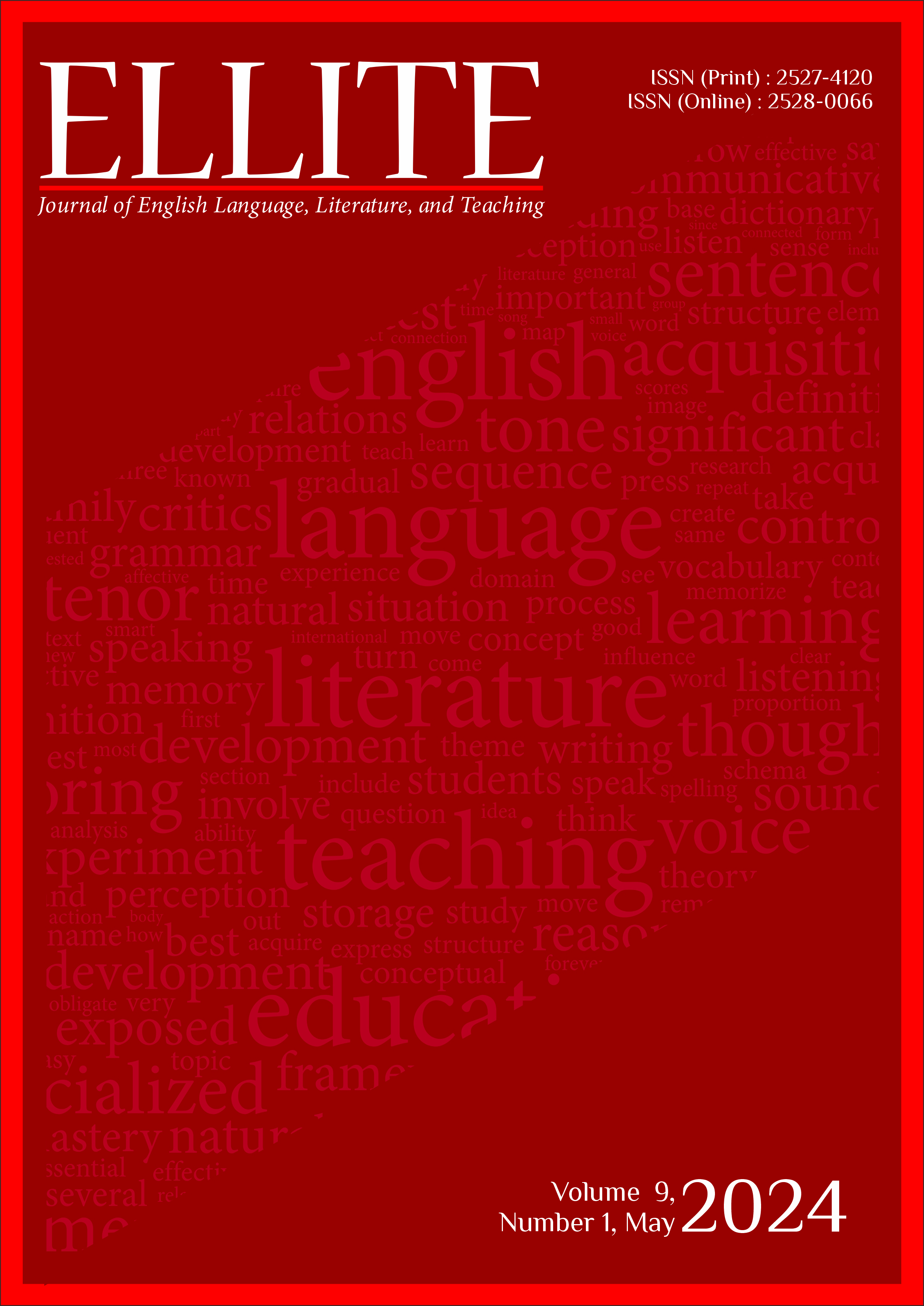Auris AI-Generated Indonesian Subtitle Scary Girl Cartoon: a Translation Study
DOI:
https://doi.org/10.32528/ellite.v9i1.2456Keywords:
Translation Quality, Translation Techniques, Auris AIAbstract
This paper studies the translation quality of phrasal verbs generated by Auris AI in the Cartoon Scary Girl (2023) from the terms of accuracy, acceptability and readability. The aforementioned techniques are then applied to translation and the quality of a translated text measured using Nababan's framework. The researcher listed phrasal verbs systematically into a table, which was analysed according to the guidelines given in Spradley theory. As a result, despite Auris AI's claims of achieving up to 99% accuracy with high-quality transcriptions, the study found that the overall translation quality was medium with the average score is 2,24 out of 3,00 or 74,6%. It shows that Auris AI's high claim for translation accuracy is really just a kind of image appealing to the customers. The assessment incorporated three terms: accuracy, which scored 2.25 or 75%; acceptability, which also scored 2.25 or 75%; and readability, which scored 2.24 or 74.6%. These results showed that the translations often do not convey the intended meaning, lack naturalness, and have only a moderate level of clarity and comprehensibility.
References
Abidah, N. K. K., Hikmawati, R., & Erawanto, V. (2024). ChatGPT in Indonesia-Arabic Translation: A Quality Analysis. Al-Arabi: Journal of Teaching Arabic as a Foreign Language, 8(1), 33–52. https://doi.org/10.17977/um056v8i1p33-52
Azar, B. (2006). Fundamentals of English Grammar (3rd edition). longman.
Brislin, R. W. (1976). Translation: Application and Research (R. B. W & R. W. Brislin, Eds.). Gardner Press. books.google.co.id
Catford, C. J. (1965). A Linguistic Theory of Translation: An Essay in Applied Linguistics (Vol. 103). Oxford U.P. books.google.co.id
Chatzikoumi, E. (2020). How to Evaluate Machine Translation: A Review of Automated and Human Metrics. Natural Language Engineering, 1–25. https://doi.org/10.1017/S1351324919000469
Ellis, R. (2001). Movies and Meaning. The Expository Times, 112(9), 304–308.
Garcia, A. (2023). Advances in AI Translation Techniques. Journal of Artificial Intelligence, 10(2), 45–60.
House, J. (1997). Translation Quality Assessment: A Model Revisited. Gunter Narr Verlag. books.google.co.id
John A, L. (2002). Cartooning in Africa. Journal of African Cultural Studies, 15(2), 127–144.
Koehn, P. (2020). Neural Machine Translation. Cambridge University Press.
Molina, L., & Albir, A. H. (2002). Translation Techniques Revisited: A Dynamic and Functionalist Approach. 498 Meta, XLVII, 4.
Nababan, M. (2010). Pengembangan Model Penilaian Kualitas Terjemahan. Universitas Sebelas Maret. Fakultas sastra dan Seni.
Nababan, M., Nuraeni, A., & Sumardiono, &. (2012). Pengembangan Model Penilaian Kualitas Terjemahan. 39–57.
Nida, A. E., & Taber, R. C. (2003). The Theory and Practice of Translation (4th ed.). Brill. books.google.co.id
O’Brien, S. (2019). Translation quality assessment: Past and future trends. Translation Studies, 12(1), 112–125.
Russell, S., & Norvig, P. (2020). Artificial Intelligence: A Modern Approach (4th ed.).
Safei, N. H., & Salija, K. (2018). The Naturalness and Accuracy of English Short Story Translation into Indonesian. 5.
Spradley, J. P. (1980). Participant Observation. Holt, Rinehart and Winston.
Sumiati, Baharuddin, & Saputra, A. (2022). The Analysis of Google Translate Accuracy in Translating Procedural and Narrative Text. JEEF (Journal of English Education Forum), 2(1), 7–11.
Wicaksono, R. D., & Kuswardani, Y. (2019). Translation Analysis of Subtitle from English into Indonesian in The Raid 2 Movie. English Teaching Journal: A Journal of English Literature, Linguistics, and Education, 7(2), 79–85. https://doi.org/10.11591/etj.v7i2.5439
Downloads
Published
Issue
Section
License
Copyright (c) 2024 Qurrotul Aini, Ahmad Yusuf Firdaus, Yopi Thahara

This work is licensed under a Creative Commons Attribution 4.0 International License.






